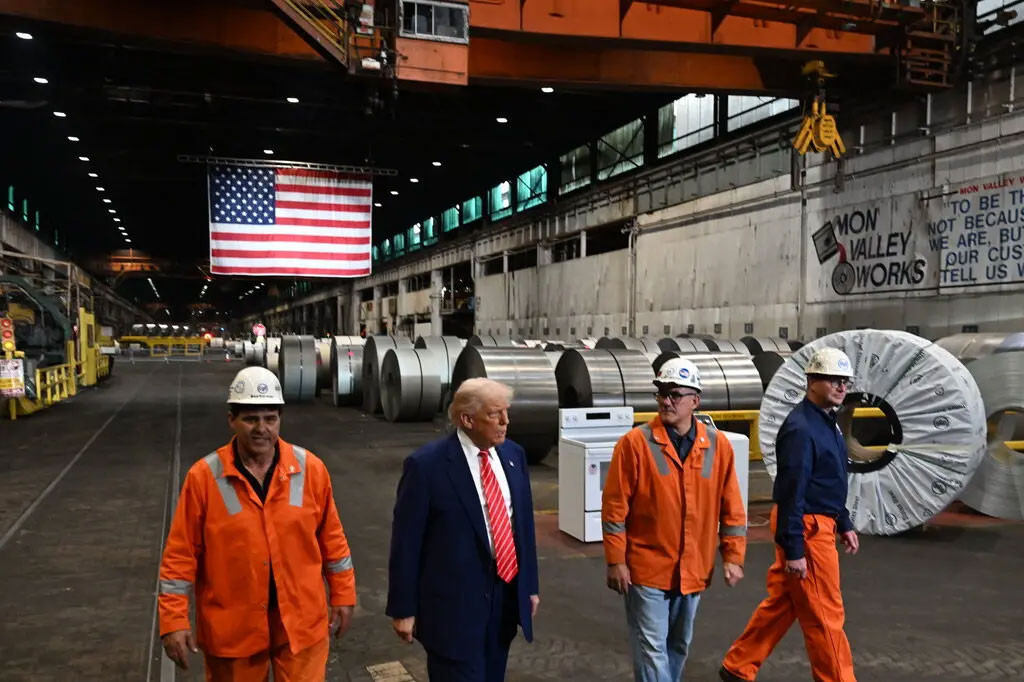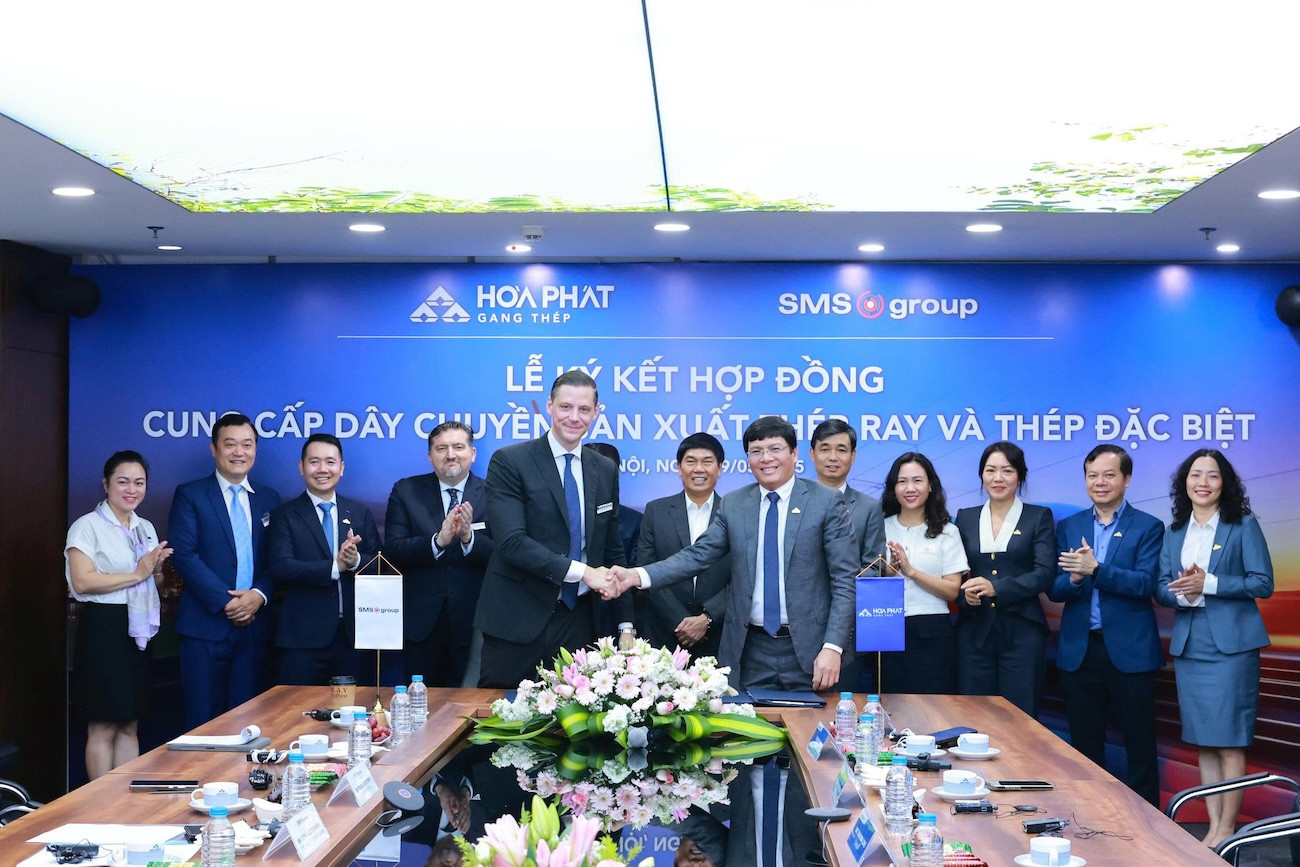U.S. President Donald Trump’s decision to double steel import tariffs to 50% to protect domestic industry has shaken global markets. Yet this policy shift may also serve as a lesson - and even an opportunity - for countries like Vietnam to intensify their own steel development strategies for the future.
U.S. doubles steel tariffs, global markets feel the shock

On May 30, at a US Steel plant in Pennsylvania, President Donald Trump announced a tariff hike on imported steel from 25% to 50%, effective June 4. The move targets low-priced steel from abroad, especially from China, but also impacts allies such as the European Union and Australia.
The Trump administration’s aim goes beyond safeguarding jobs - it seeks to ensure national security by securing domestic supplies of high-quality steel, a vital material in warships, missiles, industrial robots, and high-tech infrastructure like electric vehicles and nuclear power systems.
“A strong steel industry isn’t just about honor, prosperity, and pride - it’s a matter of national security,” Trump emphasized.
With the tariff doubled to 50%, cheap imports will struggle to compete, giving U.S. producers like US Steel a chance to invest in advanced technologies and scale up production. Notably, this policy is accompanied by indications of potential approval for the $14 billion acquisition of US Steel by Japan’s Nippon Steel. This deal is seen as a strategic upgrade of U.S. steel infrastructure while maintaining domestic control.
This strategy signals that Trump's policy is not mere protectionism but a selective push for international cooperation to reinforce domestic capacity.
The announcement immediately affected steel stocks in various countries, including South Korea and Vietnam.
On June 2, South Korean steel giants Posco and Hyundai Steel saw share prices fall by 2.4%-2.7%. In Vietnam, Hoa Phat Group (HPG) - led by Chairman Tran Dinh Long - dropped nearly 0.8%, while Hoa Sen Group (HSG) declined over 1.8%, and Nam Kim Steel (NKG) slipped 1.5%. Investors fear tougher times ahead for companies exporting steel to the U.S.
However, Trump’s move might also push countries to rethink their industrial strategies and double down on key sectors and critical supply chains - particularly steel.
It’s a timely moment for major companies to capitalize on national policy shifts to leap forward.
Coincidentally, just one day before Trump’s announcement, on May 29, Hoa Phat Group signed an agreement with Germany’s SMS Group to receive advanced technology and equipment for producing railway rails and structural steel, with an annual capacity of 700,000 tons.
Scheduled for completion in the first quarter of 2027, the new production line will make Hoa Phat the only manufacturer in Southeast Asia capable of producing railway rails to European and Japanese standards - essential for high-speed rail projects.
This marks a strategic step that could place Vietnam on the global map of advanced steel production, reducing reliance on imports and meeting the demands of critical national projects such as the North-South high-speed railway.
At a business forum hosted by Prime Minister Pham Minh Chinh on May 31, Hoa Phat Chairman Tran Dinh Long emphasized the importance of domestic production protection policies, citing Resolutions 68 and 198. He called for clearer regulatory guidance to prioritize local materials in public investment projects.
Hoa Phat’s move comes just as Trump unveils his steel protection plan - creating both a potential obstacle and an opportunity, especially as Vietnamese companies eye the once-in-a-lifetime infrastructure project: the North-South high-speed railway.
Barrier or golden opportunity for Vietnamese industrial giants?

Steel is not only the backbone of traditional industries - it underpins emerging high-tech sectors. In the U.S., high-quality steel is essential for manufacturing warships, missiles, satellites, AI robots, and renewable energy infrastructure.
Overreliance on steel imports - especially from countries with inconsistent quality standards - poses strategic risks. Trump’s 50% tariff is a declaration of technological independence, reinforcing U.S. control over strategic metal supply chains and preserving its competitive edge, particularly against China.
Likewise, in Vietnam, high-quality steel is vital for modernization and industrialization. Infrastructure projects such as the North-South high-speed railway, energy systems, and precision manufacturing demand specialized steel with high strength and accuracy.
Hoa Phat’s investment in SMS Group’s production technology not only meets domestic needs but also opens doors for export.
Private-sector leadership in strategic supply chains is critical for any country - including superpowers like the U.S. - in an era of intensifying geopolitical competition.
Controlling the domestic steel supply also stimulates auxiliary industries such as mechanical engineering, transportation, and defense.
Vietnam’s Resolution 68 and accompanying private sector support policies are seen as a foundation for enterprises to invest aggressively in technology and elevate national competitiveness.
Trump’s steel protectionism serves as a timely reminder that, in the age of high technology, national power depends on control of core industries. Vietnam can use this moment to craft protective policies and incentivize tech investment, ensuring a high degree of localization in strategic projects.
Manh Ha